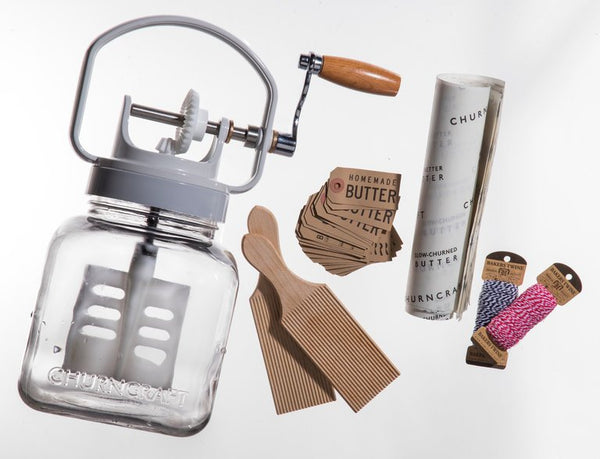Your Cart is Empty

The swing churn is the oldest form of butter churn, and it was used going back thousands of years. Nomads would fill an animal skin with milk and it would turn into butter as it was rocked back and forth while they walked. Animal skin containers suspended from wooden tripods were also likely used in more permanent living sites. We see something similar used in Bedouin culture as illustrated in this photo from 1918.
In the Middle East, earthenware containers from the Chalcolithic period, also known as the Copper Age, have been found containing traces of dairy fat dating back 6,500 to 5,500 years ago. These ovoid containers – they look vaguely like submarines to me – had lug handles at each end allowing the container to be suspended from a wooden frame, and an opening on the top to pour in the milk.
In Eastern Europe, farmers also used variations on this ancient yet efficient style of swing churn. Here is an example from the Artsakh Republic, a small Armenian speaking state in the Caucasus mountains, constructed from a barrel hanging from a simple wooden crossbar.
This simple yet effective method of churning butter was also incorporated into more complex patents and models through the 19th century in industrialized America. The Davis Churn Company developed a rather charming standing swing churn wherein a brightly painted container was suspended from a wooden frame in the shape of an “x”.
Large scale swing churns designed to be suspended from the ceiling were also developed for bigger dairy farms and commercial dairy operations. While these churns certainly had an appealing design, the logistical difficulties present in suspending a massive swinging churn from the ceiling, no doubt impeded their popularity.
Alfred Clark, developed a rather unusual style of swing churn (featured in an earlier post). His novel rocking chair cum butter churn allowed the user to make butter and relax on the front porch or next to the wood stove at the same time. Though I haven’t found evidence of its manufacture, I still love the ingenuity of this patent!
Comments will be approved before showing up.


What an honor to be featured in The New York Times! We are so proud to have gotten a stamp of approval from Florence Fabricant, food critic of the NYT.
